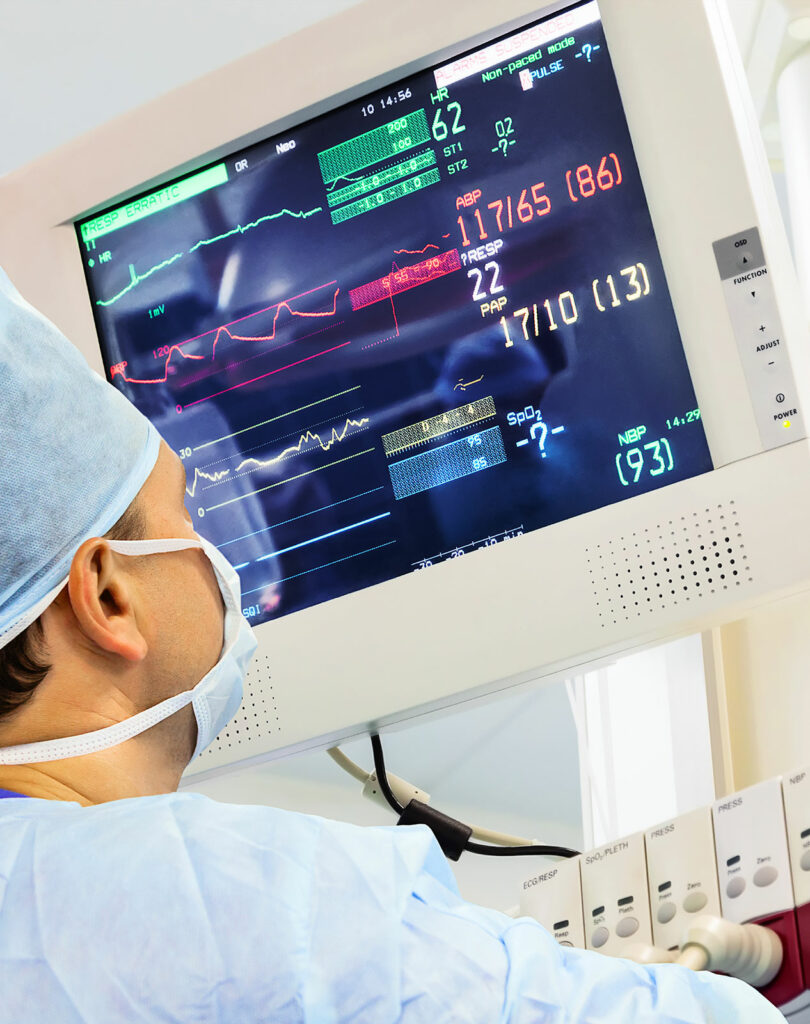TO THE EDITOR
 We appreciate the reprinting in the APSF Newsletter of the article from Anesthesia & Analgesia, (June 2022 • Volume 134 • Number 6, pages 1192–1200), entitled “Pro-Con Debate: Monitored Anesthesia Care Versus General Endotracheal Anesthesia for Endoscopic Retrograde Cholangiopancreatography” by Janik et al., and we hope that in reprinting it in the APSF Newsletter, there will be a larger and more diverse group of clinicians who will benefit from reading it.
We appreciate the reprinting in the APSF Newsletter of the article from Anesthesia & Analgesia, (June 2022 • Volume 134 • Number 6, pages 1192–1200), entitled “Pro-Con Debate: Monitored Anesthesia Care Versus General Endotracheal Anesthesia for Endoscopic Retrograde Cholangiopancreatography” by Janik et al., and we hope that in reprinting it in the APSF Newsletter, there will be a larger and more diverse group of clinicians who will benefit from reading it.
However, the authors do not mention what they consider the definition of “MAC (monitored anesthesia care)” to be. We all know that with a propofol total intravenous anesthetic (TIVA) we can adjust the rate of infusion to go from light sedation to total general anesthesia. In fact, in our experience, when a proceduralist requests “MAC anesthesia,” they are virtually always requesting a propofol general anesthetic (GA) without an endotracheal intubation. Without knowing the authors’ definition of MAC, the debate is incomplete.
The fault with the nomenclature lies with us and the specialty. The introduction of propofol into clinical use greatly expanded the quality and the spectrum of MAC, but we have ended up victims of our own success. We are clinically able to almost always administer a “room air general anesthetic” when anyone asks for a MAC. And we have perpetuated the falsehood that a general anesthetic without intubation and inhalational agent use is MAC.
The pretense can be confusing to the patient as well as the proceduralist. The grossly inaccurate term “twilight sleep” is also a term which anesthesia professionals should avoid using, even though proceduralists use it a great deal in describing what the patient should expect.
We urge anesthetic professionals to put a stop to describing a TIVA general anesthetic without an endotracheal tube or supraglottic device as MAC, and to educate staff, patients, and families on the correct use of terminology to avoid confusion and potential lapses in safety that broadening the definition of MAC can cause.
Dinesh Ramaiah, MBBS, is an associate professor of anesthesiology at the University of Kentucky College of Medicine in Lexington, Kentucky.
Gregory Rose, MD, is a professor of anesthesiology at the University of Kentucky College of Medicine in Lexington, Kentucky.
The authors have no conflicts of interest.
REPLY
We appreciate the interest of Ramaiah and Rose in our Pro-Con debate and understand their concern regarding the lack of clarity around the definition and application of the term “Monitored Anesthesia Care” (MAC). As authors of the “Con” section, we were asked to present why general endotracheal anesthesia (GEA) is preferred over MAC for endoscopic retrograde cholangiopancreatography (ERCP).
The American Society of Anesthesiologists (ASA) defined MAC in their 2018 Position on Monitored Anesthesia Care as “a specific anesthesia service performed by a qualified anesthesia provider, for a diagnostic or therapeutic procedure”.1 This service includes pre-procedural assessment and optimization, administration of anesthetic agents, support of hemodynamic stability and airway management, and the diagnosis and treatment of clinical problems arising during the procedure.1 The term MAC, in and of itself, does not describe the continuum of depth of sedation as defined in the ASA’s Continuum of Depth of Sedation: Definition of General Anesthesia and Levels of Sedation/Analgesia.2
The ASA recognizes that MAC “may include varying levels of sedation, awareness, analgesia, and anxiolysis as necessary,”1 and acknowledges that deep sedation may transition to general anesthesia (with or without intention), thus requiring the skills of an anesthesia provider to manage the effects of general anesthesia on the patient and return the patient to a state of lesser sedation.3
We recognize your concern that MAC is often interpreted and/or employed as a general anesthetic without an endotracheal tube. That is not our definition of MAC. In addition, our position on MAC vs. GEA is influenced by the numerous concerns articulated in our paper, which contrasts the uniqueness of ERCP procedures with many other procedures that commonly employ MAC (e.g., prone/semi-prone position, shared airway, special procedure table, varying duration of procedure, etc.).
We share your concern that medical professionals, staff, patients, and families should understand the intent and provision of our anesthesia services.
Jeffery Vender, MD, MCCM is a professor emeritus in the Department of Anesthesiology, Critical Care, & Pain Medicine at NorthShore University HealthSystem, Evanston IL.
Luke Janik, MD, is an assistant professor in the Department of Anesthesiology, Critical Care, & Pain Medicine at NorthShore University HealthSystem, Evanston IL.
Jeffery Vender, MD, MCCM, is a consultant for Fresnius Kabi, Medline Industries, and Medtronic. Luke Janik, MD, has no conflicts of interest.
REFERENCES
- American Society of Anesthesiologists. Position on monitored anesthesia care. Committee of Origin: Economics. (Approved by the House of Delegates on October 25, 2005, and last amended on October 17, 2018).
- American Society of Anesthesiologists. Continuum of depth of sedation: definition of general anesthesia and levels of sedation/analgesia. Committee of Origin: Quality Management and Departmental Administration. (Approved by the ASA House of Delegates on October 13, 1999, and last amended on October 23, 2019).
- American Society of Anesthesiologists. Distinguishing Monitored Anesthesia Care (“MAC”) from Moderate Sedation/Analgesia (Conscious Sedation). Committee of Origin: Economics. (Approved by the House of Delegates on October 27, 2004, and last amended on October 17, 2018).


 Issue PDF
Issue PDF PDF
PDF